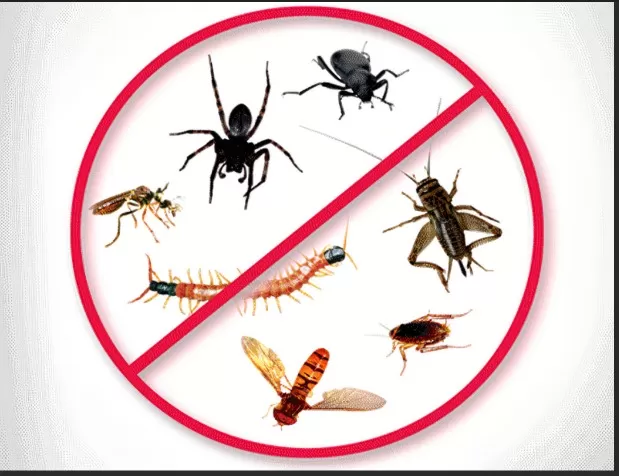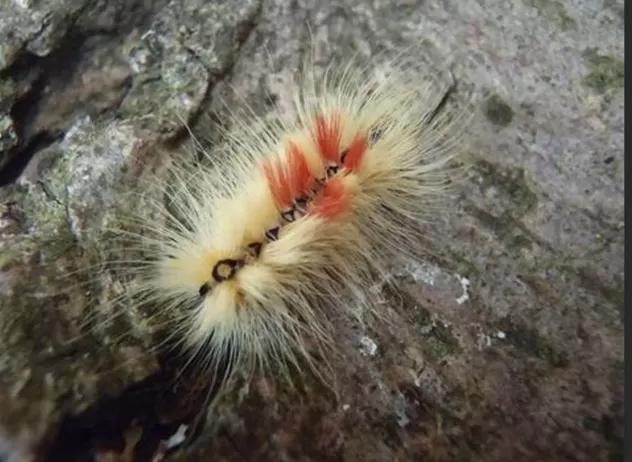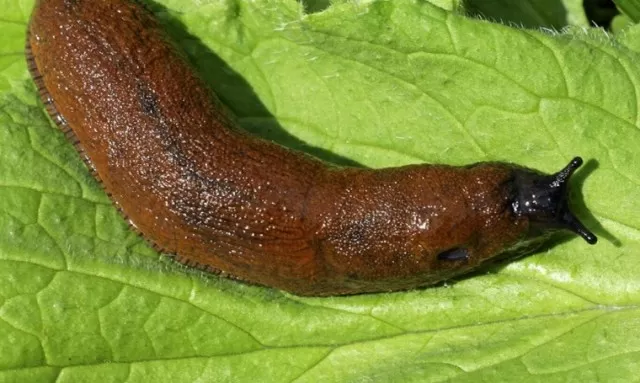Nighttime Pests to Watch Out for in Your Home. As the sun sets and you retreat to the comfort of your bed, a whole world of nocturnal insects and critters comes to life, seeking opportunities to scavenge, raid your garden, and possibly invade your home.
But fear not! With the right precautions, you can fortify your property and keep these nighttime intruders at bay.By taking proactive measures to protect your property, you can ensure a peaceful night’s rest without worrying about nocturnal intruders. Stay vigilant and implement these strategies to maintain a pest-free environment both indoors and outdoors. With a fortified defense, you can rest easy, knowing that your home and garden are safe from the pillaging activities of nocturnal creatures.
Under the Shroud of Darkness: Unveiling the Nocturnal Nuisances that Lurk

The moment darkness descends, a world hidden from our eyes comes to life.
When the lights go out, a myriad of mysterious creatures emerge from their hidden sanctuaries, stealthily invading our homes and yards. These elusive pests, shielded by the veil of night, prowl undetected, wreaking havoc and leaving a trail of damage in their wake.
Unbeknownst to many, they maintain schedules that sync with the shadows, making their detection and elimination a formidable challenge.
The notion of creepy crawlers skulking around when we least expect it is enough to send shivers down our spines.
While we sleep peacefully, these elusive invaders take advantage of the cover of darkness to carry out their misdeeds. From the eerie scratching within the walls to the faint rustling under the floorboards, their presence becomes apparent in the most unnerving ways.
It is crucial to remain vigilant, especially during those late-night ventures, like taking out the trash or investigating mysterious sounds.
These nocturnal nuisances often capitalize on our vulnerability during the wee hours, catching us off guard and amplifying the element of surprise.
Understanding the habits and preferences of these elusive creatures is paramount in safeguarding our homes.
From rodents scurrying in search of food to insects seeking shelter, each species comes with its unique set of challenges. With knowledge comes power, and arming ourselves with information about their habits and potential entry points can significantly enhance our ability to prevent infestations.
Moreover, by staying informed about efficient eradication methods, we can strike back against these secretive invaders.
Employing eco-friendly pest control measures can ensure the safety of both our households and the environment, creating a harmonious coexistence that balances the needs of humans and wildlife alike.
So, the next time you find yourself stepping into the darkness, be wary of the unseen world that surrounds you.
Unravel the mysteries that unfold when the lights go out, and prepare to defend your home against the stealthy intruders that lurk within the shadows. A proactive approach to pest management will not only protect your property but also grant you the peace of mind you deserve, allowing you to rest peacefully, undisturbed by the nocturnal activities of these unwelcome guests.
The Elusive Bloodsuckers: Unraveling the Bed Bug Menace
When it comes to nighttime pests, few evoke the same level of dread as bed bugs.
These tiny, crafty bloodsuckers have mastered the art of concealment, making them exceptionally challenging to detect with the naked eye. Sneaking into the darkest recesses of our homes, they lie in wait, ready to strike while we rest peacefully, completely unaware of their presence.
According to a harrowing 2018 survey conducted by the National Pest Management Association, it was revealed that over 50 percent of people sought the help of pest control professionals only after discovering bites on their bodies.
Alas, by the time these tell-tale bites appear, a full-blown infestation is likely already underway, with the bed bugs having multiplied their numbers stealthily.
The nocturnal habits of bed bugs play a significant role in their ability to wreak havoc undetected.
Under the cloak of darkness, they emerge from their hiding spots, often nestled within cracks, crevices, and mattress seams. Feasting on the blood of their unsuspecting hosts, they leave behind itchy, red welts as their calling card, serving as a haunting reminder of their presence.
Unbeknownst to many, bed bugs are excellent hitchhikers, catching rides on luggage, clothing, and used furniture, infiltrating new spaces with ease.
This makes them a formidable opponent, capable of spreading rapidly from one location to another, posing a significant challenge for prevention and control.
Eradicating a bed bug infestation demands a multi-faceted approach, and immediate action is key to curbing their population.
Early detection is critical, and educating ourselves about the signs of infestation can save us from enduring sleepless nights and uncomfortable bites. Seeking professional assistance at the first sign of trouble can prevent the situation from escalating into a costly and time-consuming ordeal.
Moreover, we mustn’t overlook the psychological toll that bed bugs can take on their victims.
Their presence can lead to anxiety, stress, and a sense of invasion within the sanctity of our homes. Empathy and support are crucial for those facing such infestations, as they navigate the journey to reclaim their living spaces.
In conclusion, the battle against bed bugs requires awareness, vigilance, and prompt action.
By shedding light on the elusive bloodsuckers that lurk in the night, we can arm ourselves with the knowledge needed to combat their insidious ways. Together, we can create a safer and bed bug-free environment, allowing us to rest peacefully, unburdened by the menace of these relentless nocturnal pests.
Moths: Guardians of the Garden or Pantry Pests?

Moths, fascinating creatures of the night, come in a diverse array of species, each with its own unique habits and preferences.
While some are content to roam during the day, many find solace in the cloak of darkness. Among these nocturnal insects, there are both friendly garden companions, diligently serving as pollinators, and the pesky intruders that can wreak havoc indoors, causing distress to our pantry and wardrobe.
In the enchanting world of gardens, certain moths prove to be indispensable allies.
As night descends, they flutter about, quietly and diligently pollinating plants, playing a vital role in the reproduction of numerous species. These gentle, nocturnal pollinators deserve our admiration and protection, as they contribute to the beauty and abundance of our natural surroundings.
However, not all moths hold such benevolent intentions towards humans.
Some of their nighttime kin have developed a taste for our provisions, finding their way into our pantries and cupboards, and causing disruptions by contaminating food products. The stealthy invaders can feast on grains, cereals, and other stored items, leaving us with the frustrating task of salvaging what they haven’t ruined.
Moreover, the appetite of certain moth species goes beyond our sustenance and extends to our clothing.
Their larvae, commonly known as “clothes moths,” have an unfortunate penchant for devouring natural fibers, leaving holes and damage in their wake. Valuable garments and cherished heirlooms may fall victim to these tiny, yet voracious, marauders.
To prevent a moth infestation in our pantry, it is crucial to implement simple yet effective measures.
Properly sealing food containers, using airtight jars, and keeping our pantry clean and organized can significantly reduce the chances of an unwanted encounter with these unwelcome guests.
Similarly, when it comes to safeguarding our wardrobe, a proactive approach can prove invaluable.
Regularly inspecting and cleaning clothing, especially those made from natural fibers like wool or silk, can help us spot any signs of moth activity early on and take timely action to prevent further damage.
In conclusion, moths come in a myriad of forms, from benevolent garden companions to indoor pests.
By understanding their nocturnal nature and behaviors, we can better appreciate their ecological contributions while guarding against their potential nuisances. By coexisting harmoniously with these captivating creatures of the night, we can strike a balance that protects our gardens, preserves our pantry, and safeguards our cherished garments from the subtle yet pervasive presence of moths.
Cockroaches: The Nighttime Scavengers with Hidden Dangers
In the shadowy corners of our homes, these unpleasant critters find refuge during the day, only to emerge under the veil of darkness.
Cockroaches, those infamous nocturnal scavengers, are masterful at staying out of sight when the sun is high, but when night falls, they unleash their foraging instincts, searching tirelessly for food sources.
While it might be tempting to dismiss these creepy-crawlies as merely a nighttime nuisance, underestimating their impact would be a grave mistake.
Unlike bloodsucking bed bugs, cockroaches have their own insidious ways of affecting our well-being. Their presence can lead to health hazards, particularly through the excrement they leave behind.
Cockroach feces, when encountered, can pose a significant risk to our health, causing a range of problems from gastrointestinal issues to skin irritations.
Even more concerning, the allergens present in cockroach feces have been known to trigger asthma attacks and exacerbate allergies, making them particularly hazardous to vulnerable individuals, such as children and those with preexisting respiratory conditions.
Spotting cockroaches during daylight hours should raise a red flag, as it often indicates a serious infestation problem.
These adept nocturnal creatures usually prefer the cover of darkness, so their brazen appearance in the daytime suggests a burgeoning population hiding just out of sight.
Swift action is imperative when dealing with a cockroach infestation.
These insects are resilient and highly adaptable, making their elimination a challenging task for homeowners. To ensure effective and thorough eradication, it’s best to seek the assistance of a pest control professional as soon as possible.
Preventing a cockroach invasion demands a multifaceted approach.
Keeping our living spaces clean, maintaining proper food storage, and sealing any potential entry points are essential steps to deter these tenacious intruders.
In conclusion, cockroaches, with their nocturnal habits and capacity to leave behind health risks, are not to be underestimated.
Awareness of their behavior and potential dangers is crucial in our efforts to protect ourselves and our homes from their unwelcome presence. By recognizing the signs of a cockroach infestation and taking timely action, we can ensure a safer and more comfortable living environment for ourselves and our loved ones.
Garden Vandals by Moonlight: Dealing with the Nocturnal Slugs

As the much-awaited spring showers breathe life into your garden, the sight of vibrant greenery fills you with joy and anticipation.
But alas, the next morning reveals a less delightful scene—your once thriving leafy greens now adorned with conspicuous holes. The culprits behind this nighttime mischief are none other than slugs, stealthy garden vandals that emerge from the shadows to indulge in their voracious feasts.
Slugs, like silent marauders of the night, are most active during darkness.
While we rest, they embark on a gourmet adventure, seeking out the most delectable treats our gardens have to offer. Their discerning palate leads them to whatever smells enticing, leaving a trail of destruction in their wake.
To protect your precious plants from becoming last night’s buffet, it’s essential to take proactive measures.
Setting up traps strategically near your vulnerable plants can be an effective way to keep these nocturnal intruders at bay. Traps designed to attract and capture slugs can help reduce their numbers and minimize the damage they inflict on your garden.
Moreover, there are various natural deterrents that you can employ to discourage slugs from making a meal out of your plants.
For instance, creating barriers around your garden beds using materials like crushed eggshells or diatomaceous earth can act as obstacles that slugs find difficult to traverse. Additionally, certain plants, such as mint, lavender, and rosemary, emit fragrances that repel slugs, making them valuable companions in your garden.
While slug control is crucial, it’s also essential to adopt environmentally friendly practices.
Avoiding the use of chemical pesticides can help preserve the delicate balance of your garden ecosystem and protect beneficial organisms that contribute to its health.
Ultimately, vigilance and a little bit of garden wisdom can go a long way in safeguarding your lush oasis from these night-wandering herbivores.
Embrace the challenge of coexisting with nature’s creatures while employing ingenious methods to protect your garden from the mischievous slugs that emerge under the moonlit skies.
*The information is for reference only.